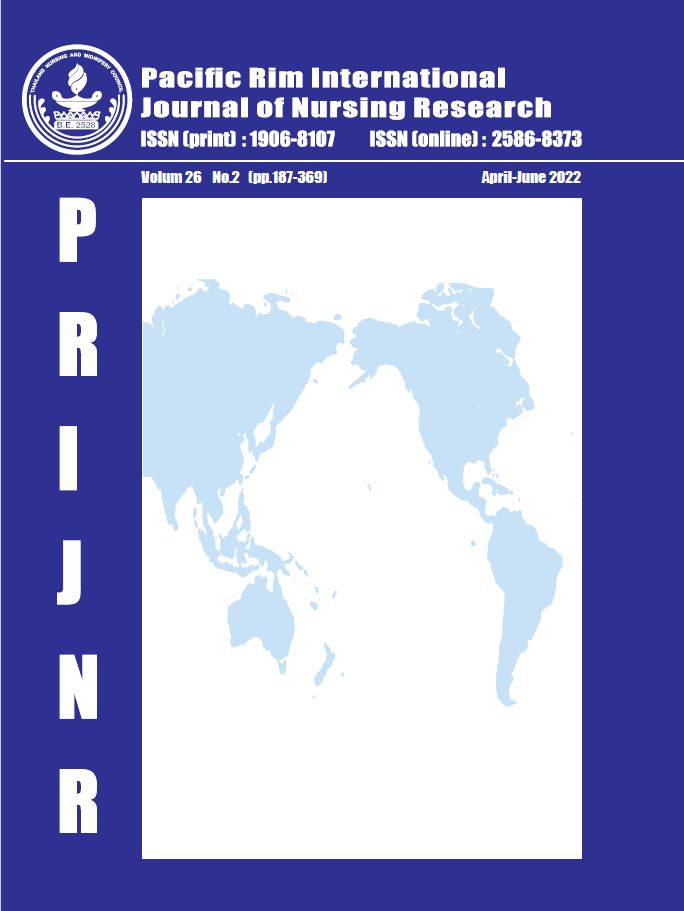Incidence and Risk Factors of Major Neonatal Birth Injuries in a Tertiary Care Hospital in Thailand: A Retrospective Cohort Study
Keywords:
Incidence, Neonatal birth injuries, Outcomes, Risk factors, ThailandAbstract
Major neonatal birth injuries can cause short- and long-term negative neonatal outcomes. To date, there is still limited information on major neonatal birth injuries in Thailand, both in terms of incidence and associated factors. The objectives of this retrospective cohort study were to determine the incidence and associated factors of major neonatal birth injuries in a tertiary care hospital in Thailand. Medical records of 15,209 deliveries were reviewed and major neonatal birth injuries were identified. For each case of major neonatal birth injuries, another four controls were randomly selected as a comparison group to determine possible associated factors. A total of 81 cases with major neonatal birth injuries were identified, corresponding to incidence of 0.53%. Most common injuries were subgaleal hematoma (0.414%), fracture of clavicle (0.066%), and brachial plexus injuries (0.066%). Those with major neonatal birth injuries compared to those without injuries were significantly more likely to be nulliparous, had higher birth weight, higher rate of large for gestational age and macrosomia. They had significantly higher rate of birth asphyxia and neonatal intensive care unit admission with a longer hospital stay. Independent associated factors were abnormal second stage of labor, instrumental delivery, and large for gestational age infants. Understanding the incidence and associated factors could help raising awareness when caring women at higher risks for neonatal birth injuries. Anticipation, preparation, and early detection of the conditions would result in timely management and improvement of neonatal outcomes.
References
Pressler JL. Classification of major newborn birth injuries. J Perinat Neonatal Nurs. 2008;22(1):60-7. doi:10.1097/01.JPN.0000311876.38452.fd.
Moczygemba CK, Paramsothy P, Meikle S, Kourtis AP, Barfield WD, Kuklina E, et al. Route of delivery and neonatal birth trauma. Am J Obstet Gynecol. 2010;202(4):361.e1-6. doi: 10.1016/j.ajog.2009.11.041.
Dumpa V, Kamity R. Birth Trauma. StatPearls: Treasure Island (FL); 2021.
Iskender C, Kaymak O, Erkenekli K, Ustunyurt E, Uygur D, Yakut HI, et al. Neonatal injury at cephalic vaginal delivery:a retrospective analysis of extent of association with shoulder dystocia. PloS one. 2014;9(8):e104765. doi: 10.1371/journal.pone.0104765.
Clapp MA, Bsat J, Little SE, Zera CA, Smith NA, Robinson JN. Relationship between parity and brachial plexus injuries. J Perinatol. 2016;36(5):357-61. doi: 10.1038/jp.2015.205.
Linder N, Linder I, Fridman E, Kouadio F, Lubin D, Merlob P, et al. Birth trauma-isk factors and short-term neonatal outcome. J Matern Fetal Neonatal Med. 2013;26(15):1491-5. doi: 10.3109/14767058.2013.789850.
Mosavat SA, Zamani M. The incidence of birth trauma among live born term neonates at a referral hospital in Rafsanjan, Iran. J Matern Fetal Neonatal Med. 2008;21(5):337-9. doi: 10.1080/14767050801927921.
Wen Q, Muraca GM, Ting J, Coad S, Lim KI, Lisonkova S. Temporal trends in severe maternal and neonatal trauma during childbirth: a population-based observational study. BMJ Open. 2018;8(3):e020578. doi: 10.1136/bmjopen-2017-020578.
Gupta R, Cabacungan ET. Neonatal birth trauma: analysis of yearly trends, risk factors, and outcomes. J Pediatr. 2021;238:174-80.e3. doi: 10.1016/j.jpeds.2021.06.080.
Ouzounian JG. Risk factors for neonatal brachial plexus palsy. Semin Perinatol. 2014;38(4):219-21. doi: 10.1053/j.semperi.2014.04.008.
Akangire G, Carter B. Birth injuries in neonates. Pediatr Rev. 2016;37(11):451-62. doi: 10.1542/pir.2015-0125.
Rehm A, Promod P, Ogilvy-Stuart A. Neonatal birth fractures: a retrospective tertiary maternity hospital review. J Obstet Gynaecol. 2020;40(4):485-90. doi: 10.1080/01443615.2019.1631770.
Lalka A, Gralla J, Sibbel SE. Brachial plexus birth injury: epidemiology and birth weight impact on risk factors. J Pediatr Orthop. 2020;40(6):e460-5. doi: 10.1097/BPO.0000000000001447.
Muraca GM, Lisonkova S, Skoll A, Brant R, Cundiff GW, Sabr Y, et al. Ecological association between operative vaginal delivery and obstetric and birth trauma. CMAJ. 2018;190(24):E734-41. doi: 10.1503/cmaj.171076.
Van der Looven R, Le Roy L, Tanghe E, Samijn B, Roets E, Pauwels N, et al. Risk factors for neonatal brachial plexus palsy: a systematic review and meta-analysis. Dev Med Child Neurol.2020;62(6):673-83. doi: 10.1111/dmcn.14381.
Kekki M, Salonen A, Tihtonen K, Mattila VM, Gissler M, Huttunen TT. The incidence of birth injuries decreased in Finland between 1997 and 2017: a nationwide register study. Acta Paediatr. 2020;109(12):2562-9. doi: 10.1111/apa. 15267.
Hamadi HY, Xu J, Tafili AA, Smith FS, Spaulding AC. Hospital geographic location and unexpected complications in term newborns in Florida. Matern Child Health J. 2021 Oct 6. doi: 10.1007/s10995-021-03240-1.
Chavanaves N, Booranavanich K. Risk factors of birth injury in Faculty of Medicine Vajira Hospital, Navamindradhiraj University. Vajira Med J. 2020; 64(1): 1-10. doi: 10.14456/vmj.2020.1.
Ojumah N, Ramdhan RC, Wilson C, Loukas M, Oskouian RJ, Tubbs RS. Neurological neonatal birth injuries: a literature review. Cureus. 2017;9(12):e1938. doi: 10.7759/cureus.1938.
Walsh JM, Kandamany N, Ni Shuibhne N, Power H, Murphy JF, O’Herlihy C. Neonatal brachial plexus injury: comparison of incidence and antecedents between 2 decades. Am J Obstet Gynecol. 2011;204(4):324.e1-6. doi: 10.1016/j.ajog.2011.01.020.
Abedzadeh-Kalahroudi M, Talebian A, Jahangiri M, Mesdaghinia E, Mohammadzadeh M. Incidence of neonatal birth injuries and related factors in Kashan, Iran. Arch Trauma Res. 2015;4(1):e22831. doi: 10.5812/atr.22831.
Karahanoglu E, Kasapoglu T, Ozdemirci S, Fadiloglu E, Akyol A, Demirdag E, et al. Risk factors for clavicle fracture concurrent with brachial plexus injury. Arch Gynecol Obstet. 2016;293(4):783-7. doi: 10.1007/s00404-015-3917-5.
Swanson AE, Veldman A, Wallace EM, Malhotra A. Subgaleal hemorrhage: risk factors and outcomes. Acta Obstet Gynecol Scand. 2012;91(2):260-3. doi: 10.1111/j.1600- 0412.2011.01300.x.
Downloads
Published
How to Cite
Issue
Section
License
Copyright (c) 2022 Pacific Rim International Journal of Nursing Research

This work is licensed under a Creative Commons Attribution-NonCommercial-NoDerivatives 4.0 International License.
Copyright: The Pacific Rim International Journal of Nursing Research, Thailand Nursing & Midwifery Council has exclusive rights to publish, reproduce and distribute the manuscript and all contents therein.








.png)



